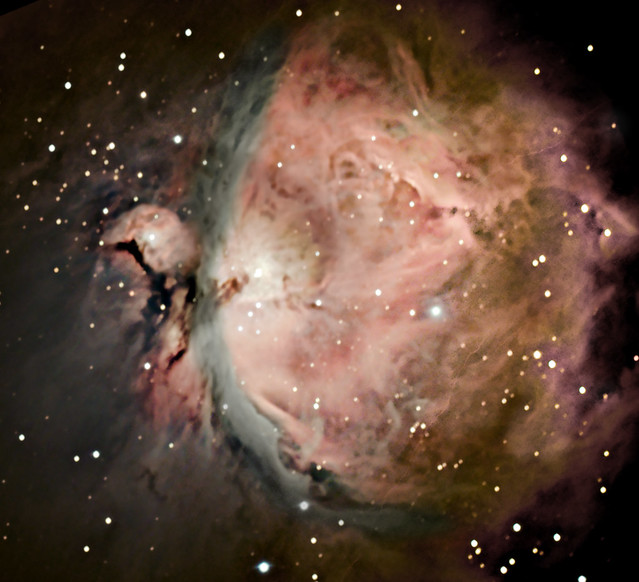
Orion Nebula taken on Feb. 2, 2021
This was my last chance to photo M42 and the maximum frames I can achieve before the upper balcony obscure its view. I live at a latitude of 25 degrees N which was a godsent when it came to last years planetary photography (43 deg). For now I will have to leave behind the Horsehead Nebula and the Pleiades for next year, and search for new and exciting targets. Looking over the three recent M42's, I like this the most because of its greater detail and tonal quality. All my deep sky images have been in 16 bits and the planets have been in 8 bits. I try to keep the noise low and the Trapezium visible. All M42's were acquisitioned from ver. 3.3 beta of SharpCap Pro and by using the "Brain" helped me determine the best parameters to use for obtaining the best results. Let me know what you think is your favorite M42 among the three I've taken and why.

